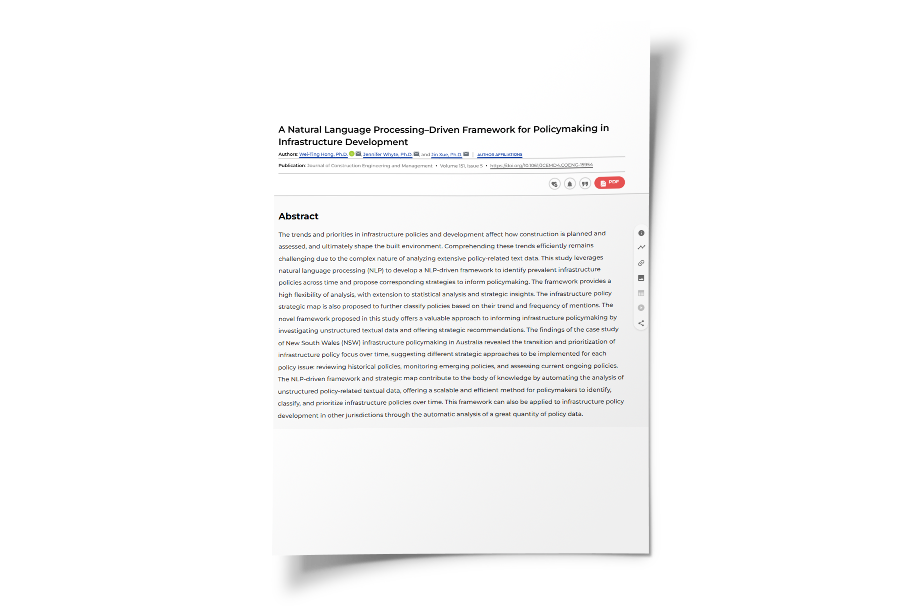A Natural Language Processing–Driven Framework for Policymaking in Infrastructure Development
Abstract
The trends and priorities in infrastructure policies and development affect how construction is planned and assessed, and ultimately shape the built environment. Comprehending these trends efficiently remains challenging due to the complex nature of analyzing extensive policy-related text data. This study leverages natural language processing (NLP) to develop a NLP-driven framework to identify prevalent infrastructure policies across time and propose corresponding strategies to inform policymaking. The framework provides a high flexibility of analysis, with extension to statistical analysis and strategic insights. The infrastructure policy strategic map is also proposed to further classify policies based on their trend and frequency of mentions. The novel framework proposed in this study offers a valuable approach to informing infrastructure policymaking by investigating unstructured textual data and offering strategic recommendations. The findings of the case study of New South Wales (NSW) infrastructure policymaking in Australia revealed the transition and prioritization of infrastructure policy focus over time, suggesting different strategic approaches to be implemented for each policy issue: reviewing historical policies, monitoring emerging policies, and assessing current ongoing policies. The NLP-driven framework and strategic map contribute to the body of knowledge by automating the analysis of unstructured policy-related textual data, offering a scalable and efficient method for policymakers to identify, classify, and prioritize infrastructure policies over time. This framework can also be applied to infrastructure policy development in other jurisdictions through the automatic analysis of a great quantity of policy data.

Authors:
Wei-Ting Hong, Jennifer Whyte and Jin Xue
Journal:
Journal of Construction Engineering and Management (February, 2025)
Read:
https://doi.org/10.1061/JCEMD4.COENG-15954





Leave a Reply